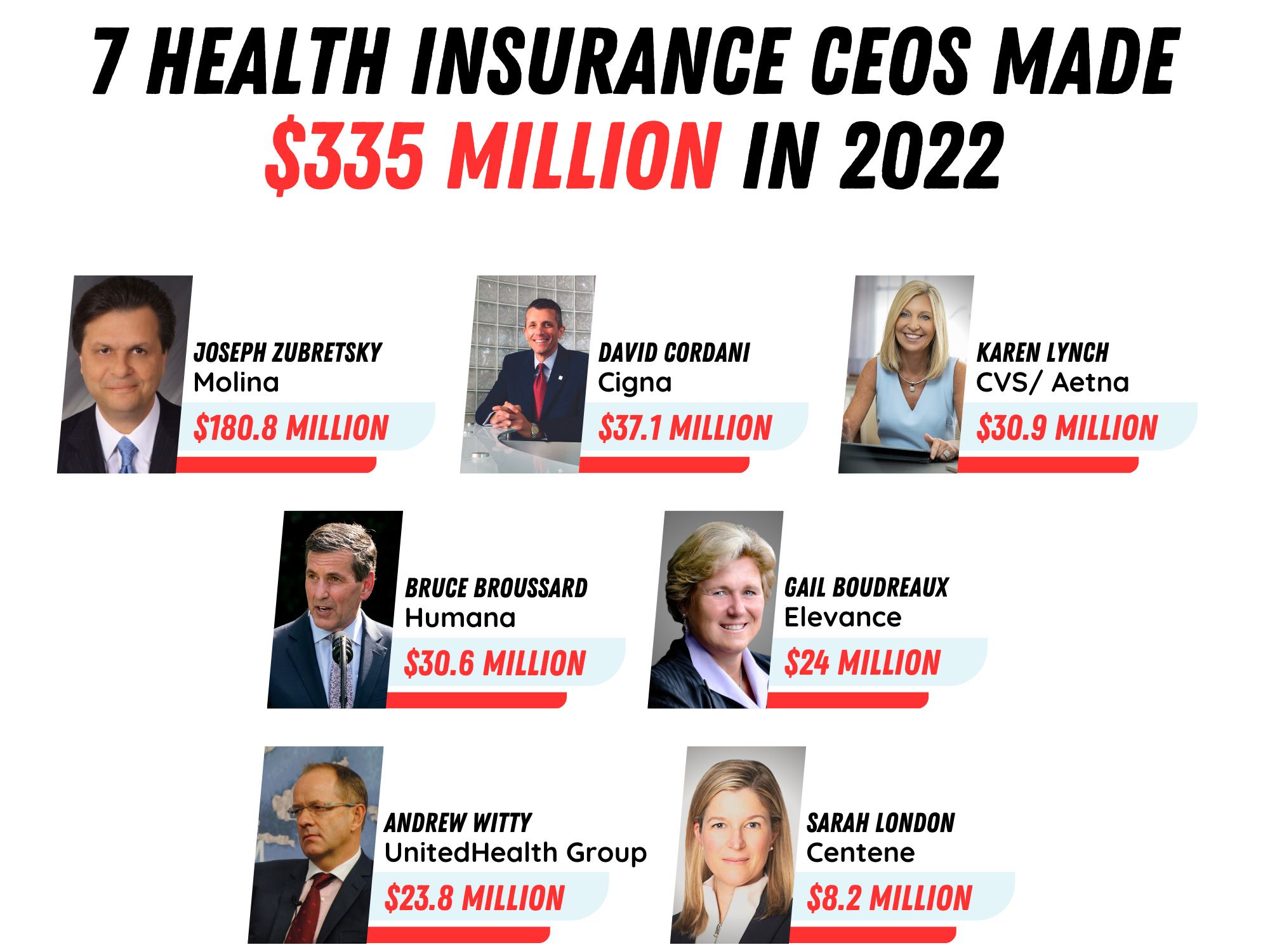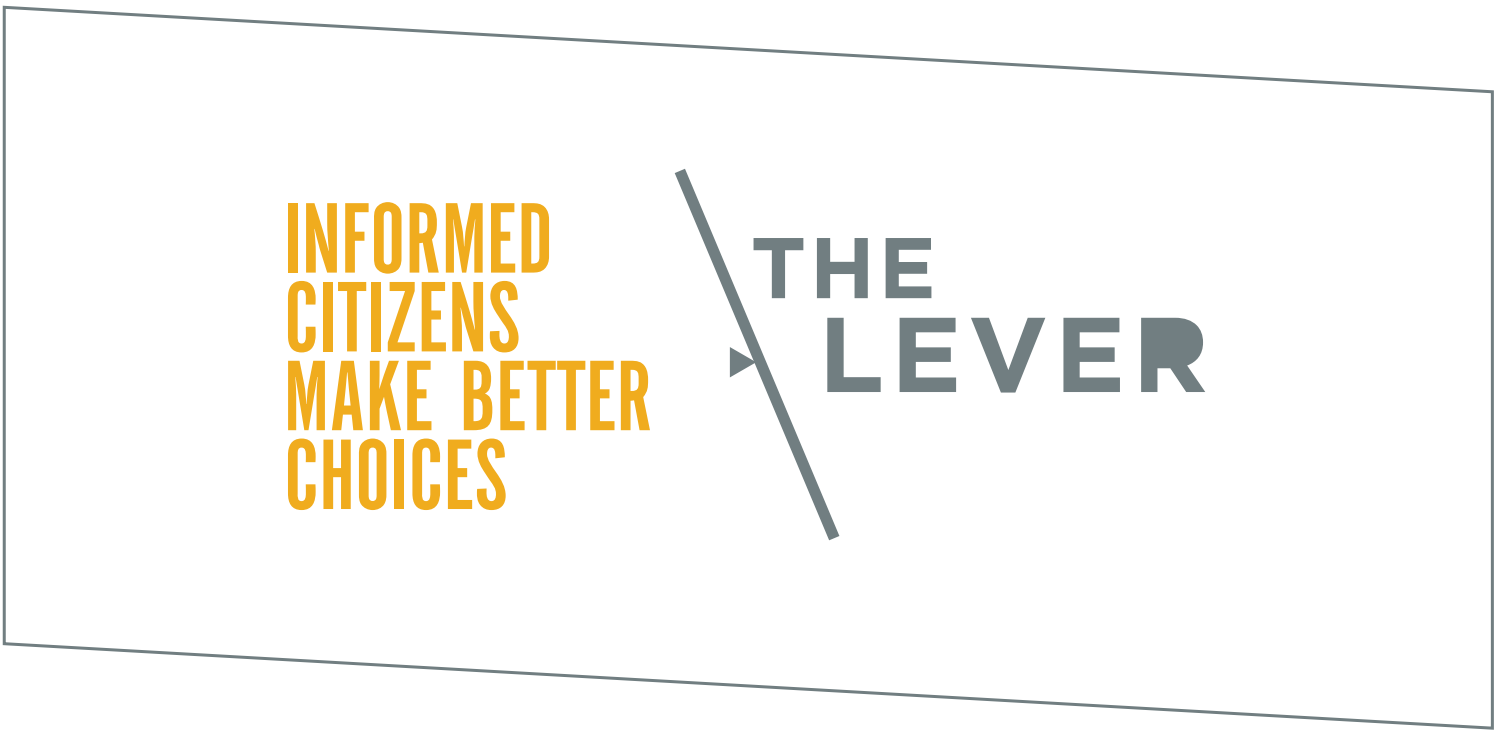Big health insurance companies have been on a spending spree buying back shares of their own stock, a gimmick — illegal until a few years ago — that has made a few insurance company CEOs incredibly rich at a time when 100 million Americans are saddled with medical debt.
Share repurchases benefit top executives and other shareholders at the expense of the insurers’ customers — especially health plan enrollees with such high out-of-pocket requirements they’re getting buried under a mountain of medical debt. As Forbes reported last July, those out-of-pocket requirements have reached such heights that millions of Americans are now “functionally uninsured.”
Now that the seven investor-owned health insurers have disclosed how much money their top executives made last year (as the SEC requires publicly traded companies to do), we can see just how important that gimmick has become to the people who are ultimately responsible for whether we get the care our doctors say we need, how much we have to send them every month in premiums, and how much we have to shell out in copays and deductibles before they’ll start paying our medical bills.

As Bob Herman, a journalist at healthcare news outlet STAT, reports, the CEOs of those companies were paid a record $335 million last year, 18 percent more than the previous record set in 2021. Had it not been for their companies’ share buybacks, they wouldn’t have banked nearly that much money.
While a few other media outlets reported on the CEOs’ 2022 compensation, STAT’s reporting calculates the pay packages to reflect how much the executives gained on their long-held stock (primarily by cashing in on stock options they’ve been awarded in recent years).
An analysis of how much the companies have used our premiums and tax dollars to buy back shares of their own stock showed that they spent a combined $141 billion on share repurchases between 2007 and 2022.
Keep in mind that that is $141 billion that otherwise could have been used to reduce our premiums and deductibles — and keep an untold number of American families out of bankruptcy and away from GoFundMe campaigns — but was instead used to increase the wealth of their shareholders and top executives.
A strong case can be made that the biggest beneficiaries of the stock buybacks are the companies’ CEOs. That’s because the value of the shares of stock they hold increases every time their companies repurchase shares.
It works like this: When a company buys back shares, it reduces the number of shares outstanding, and that has the effect of inflating the value of each share of stock.
I benefited from this gimmick myself when I was at Cigna because a portion of my compensation was paid — in one way or another — in stock.
What I was paid in stock, however, was a tiny fraction of what my CEO was paid. As I told reporters when I was Cigna’s chief spokesman, about 90 percent of the CEO’s compensation was “at risk,” meaning that most of what he was paid was based on how well the company met shareholders’ financial expectations, specifically whether and how much the company increased the value of each share of stock (earnings per share, or EPS).
Not much has changed in how CEOs are compensated since I left Cigna in 2008. As STAT’s Herman reported last year when he compiled insurance company CEOs’ compensation figures for 2021, roughly 87 percent of their pay came from exercised and vested stock.
When that much of your pay is “at risk,” you can be certain the CEOs’ top priority is to do whatever it takes to boost earnings per share. Their net worth depends on it. Every time Cigna announced quarterly earnings, my net worth would go up or down based largely on how shareholders reacted to the EPS number — a number that could be artificially inflated upward by share buybacks during the quarter. But the swings in my net worth were negligible compared to my CEO’s. (Cigna’s current CEO, by the way, took the top spot among health insurance executives in 2021 with a $91 million haul. In 2022, he landed in second place with $37.1 million in total compensation.)

Help Us Do More Stories Like This
We're building a reader-supported investigative news outlet that holds accountable the people and corporations manipulating the levers of power. Can you spare a few dollars to help?
The money insurers’ CEOs make these days is especially alarming when you consider that they are getting more and more of it from us as taxpayers. The three smallest of the seven big for-profit insurers — Centene, Humana, and Molina — now get 80 to 90 percent or more of their revenue from taxpayers through the Medicare Advantage plans they operate and the state Medicaid programs they manage.
And what should be especially alarming is that the CEO of the smallest of the taxpayer-dependent companies — Molina — was paid the most last year — by far.
Of the $335 million the seven CEOs were paid last year, more than half of it, $181 million, went to Molina’s CEO, Joseph Zubretsky. As STAT’s Herman reported, “More than 80% of Molina’s revenues come from Medicaid, the state and federal insurance program that covers low-income people.”
Zubretsky’s compensation package, Herman noted, “is one of the largest ever among health insurance executives.”
The total is even more eye-popping when you look at how Molina's CEO pay has jumped over the past 10 years — from $9.5 million in 2012 to $180.8 million last year.
Molina hired Zubretsky in November 2017 after posting a significant quarterly loss. His hiring was announced at the same time the company said it planned to lay off 1,500 employees, exit some of the markets it served, and jack up premiums on the ACA marketplace plans by 55 percent.
To be fair, all seven of the companies are far bigger than they were 10 years ago. But that growth has been fueled largely by mergers and acquisitions, not by organic growth of their health plan membership.
As Herman wrote:
“The paydays reflect not only the higher stock prices but also the companies’ relentless pursuits to get bigger. Most of the companies have continued to invest in other areas outside of health insurance — things like medical groups, technology, home health, and pharmacy benefits. And on the insurance side, every company has gone all-in on government-funded programs they previously viewed as unattractive: Medicare Advantage and Medicaid. Even the individual exchanges created by the Affordable Care Act — which for a time were viewed as untouchable and led to a spate of insurer exits — are now highly sought-after.”
Keep all of this in mind the next time you go to the pharmacy counter and are told that even with insurance you’ll have to pay a king’s ransom for your meds because your insurer — through its pharmacy benefit manager (PBM) — has once again jacked up your out-of-pocket requirement. Or the next time you notice how much has been deducted from your paycheck for your health insurance — and Uncle Sam.



